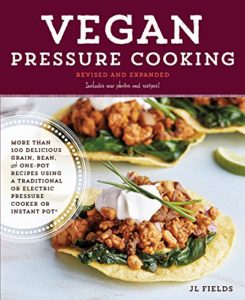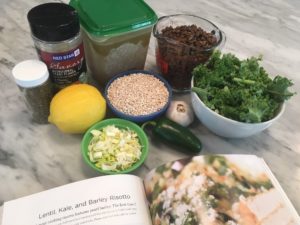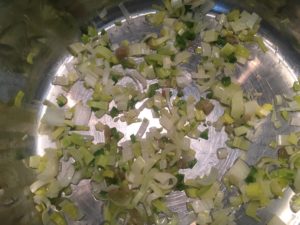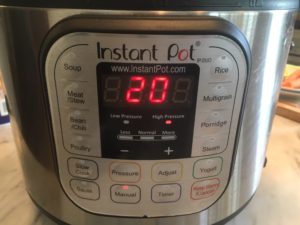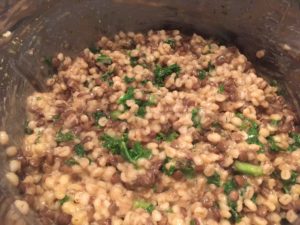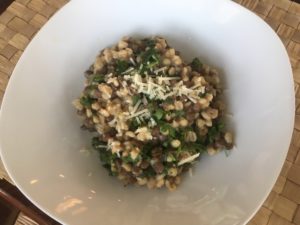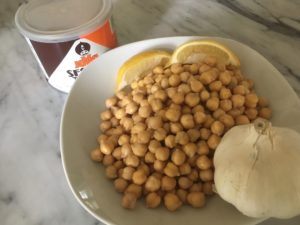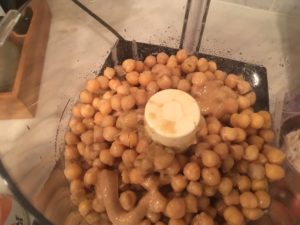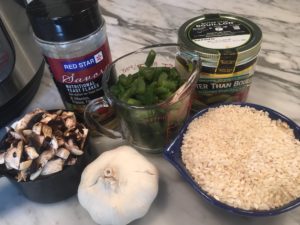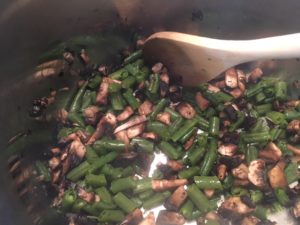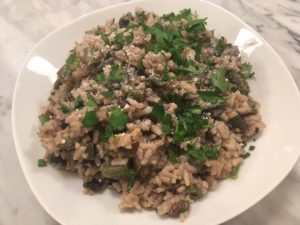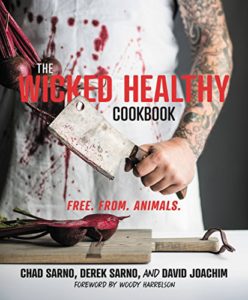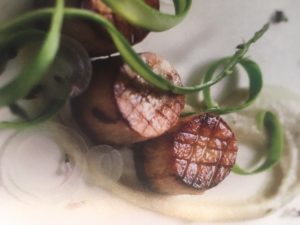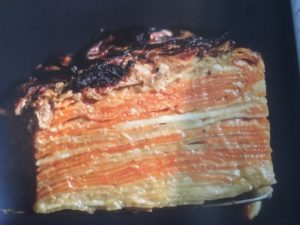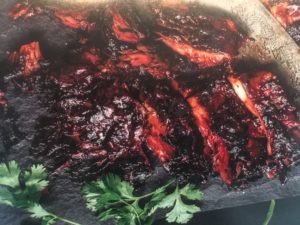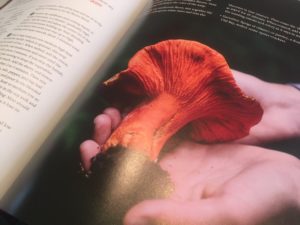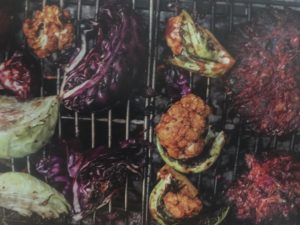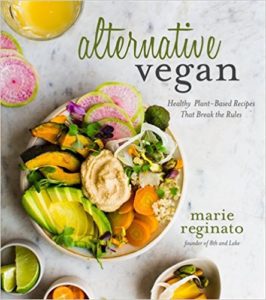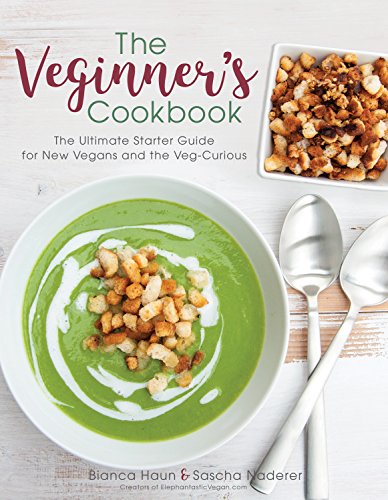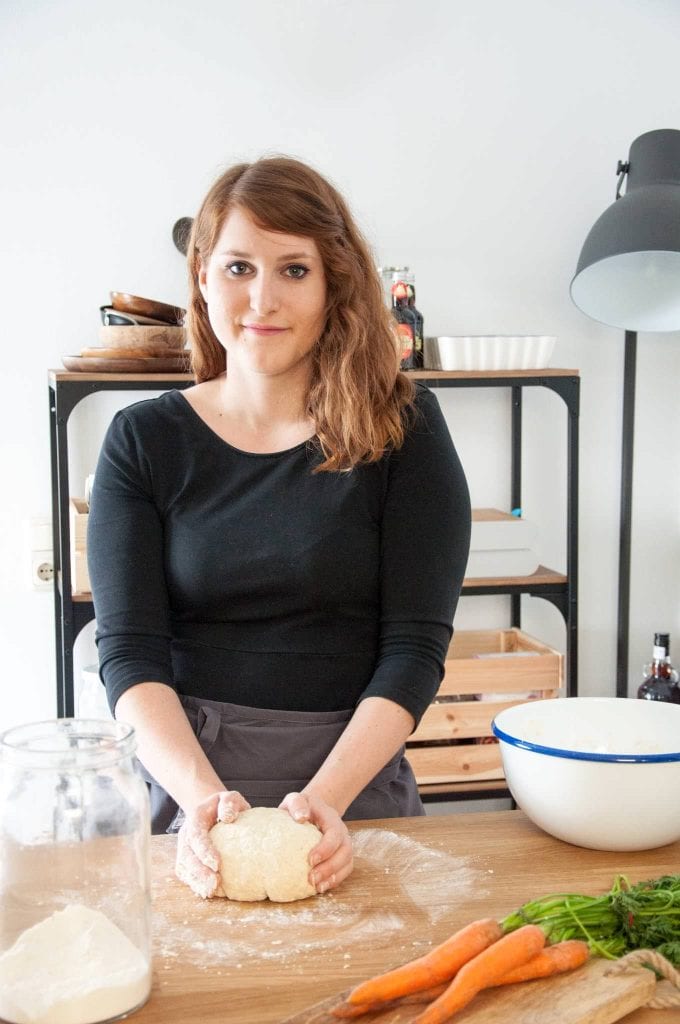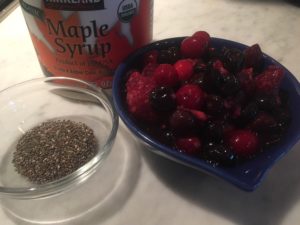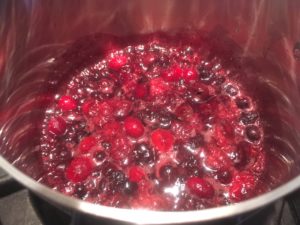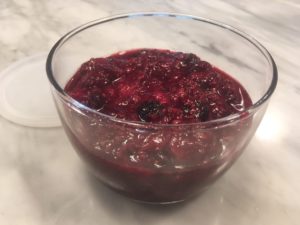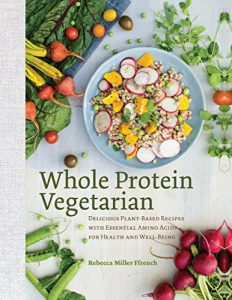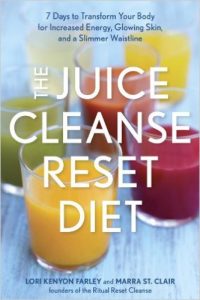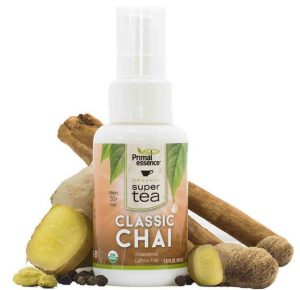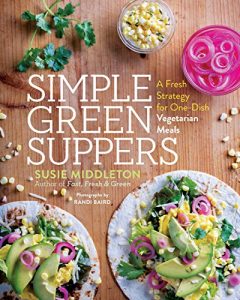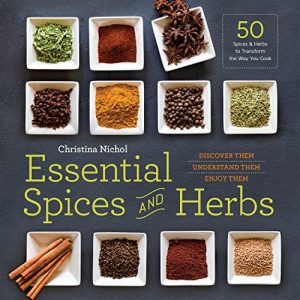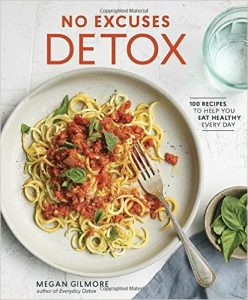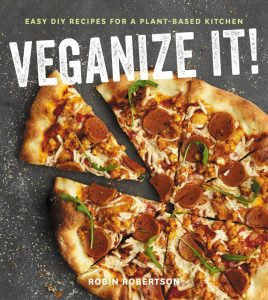Category Archives: Plant-Based Cookbooks
Vegan Pressure Cooking – New and Expanded
By JL Fields
Fair Winds Press 2018 $22.99
With all the discussions about the benefits of pressure cookers for preparing beans and grains, I was excited to read and cook from Vegan Pressure Cooking – especially since the revised, expanded edition includes special instructions for Instant Pots!
There are some helpful, basic tips on pressure cooking in general, adjustments for various types, and plethora of full-page, color photos of the finished dishes – for roughly half of all recipes. There’s a serious emphasis on beans and grains – which is where pressure cookers really shine. Sometimes, for green and other non-starchy vegetables, the set-up, pressure-raising and releasing takes longer than simply plopping a pot on the stove (or using the microwave).
I am an Instant Pot fan, but its size encourages tucking it away in the pantry. Out of sight; out of mind. I was counting on this book re-energizing that appliance. And it certainly did. As a result, the IP is still on the counter after a positive week of trying some of JL Fields’ recipes. I skipped the green beans as not logical for an IP and headed toward the beans and grains.
The first recipe was “Lentil, Kale and Barley Risotto.” Two cups of cooked lentils were defrosting in the fridge and kale and jalapenos were in the hydrator – so it was a perfect choice. The recipe worked exactly as described and was delicious – but three of us ate most of it (and the servings listed are 6-8). Next time, I would be less judicious with the jalapeno (the heat was barely detectable) and add the baked tofu as the author suggested (or perhaps a sliced vegan sausage or two) which might stretch it to the suggested servings. The photo was a very tight close-up so it was hard to tell if my effort looked like the author’s.
“Chickpea Hummus” was next. Homemade hummus is a staple in our house – but more often than not from cans. A quick, delicious version from dried beans would be welcome. The chickpeas were soaked for 24 hours and then sat, drained, in the fridge for a day. I subbed the white part of leeks for the onion (that’s what I had) and reduced the garlic by half (since aggressive garlic is not loved by all in this house). There were two problems – the 15 minutes under high pressure with natural release was not nearly long enough in an IP (I let it gurgle on saute for another 20 minutes). And the flavor was bland – particularly surprising because onion is not traditional. Perhaps adding cumin, or maybe more lemon. Next time, I will try high pressure for 20-25 minutes (after all, preserving the shape of the chickpea is not relevant for hummus), use a real onion and up the garlic a little to the suggested quantity (and add cumin).
The next choice was “Lemon Green Bean Risotto.” Except for the color of the dish, this was a success. Perhaps the stock was too dark giving the final product an unappealing brownish tinge. Other than that, it was creamy and hands-free – pretty amazing for risotto. I will definitely try this again with a lighter colored stock.
The Wicked Healthy Cookbook – Free. From. Animals. (Preliminary Review)
By Chad Sarno, Derek Sarno, and David Joachim
Grand Central Life & Style, Hachette Book Group, New York, NY 2018 $30
I love this book!!! From the minute it arrived, I was lost. Just skimming the essays, lists, Pro Tips and stunning recipes and images took me into the wee hours. Putting it down was not an option. Granted, my guilty pleasure is reading cookbooks. But this is a very special tome. Just when it felt like plant-based cuisine had reached its limits, with book after book adding a few new spins but churning the same ground, Wicked Healthy has seriously upped the ante. It’s fun, exciting, innovative, energetic, – the enthusiasm for the possibilities of plant-based gastronomy leaps off the pages. Dust off that mandoline!
To be clear this is not a book for every veg-forward cook. It is not an intro to the philosophy or a beginners’ guide. Some of the recipes are challenging, time-consuming and utilize esoteric ingredients that may require the resources of Whole Foods, Amazon, H-Mart, Thrive, a sophisticated farmers market and a few small mail-order houses – and even then you may have to be satisfied with recommended subs. It’s also, not surprisingly, a bit cheffy – many ingredients lists include other recipes so, unless you have a staff, there is sometimes serious time required. But it will be well-spent, satisfying time – even the process of discovering new or less-available ingredients will be well-spent, satisfying time. Bottom line, if all you do is just read The Wicked Healthy Cookbook, you can’t help but appreciate the expanded possibilities of plant-based cookery.
This is just my first review. I am going to cook my way through a good chunk of the book and post the results as I go. Starting with their bold new take on mushrooms: King Oysters, Maitakes, and Lobsters. What fun!! I can’t wait.
(One question – olive oil instead of avocado oil for high heat cooking?)
Alternative Vegan – Healthy Plant-Based Recipes that Break the Rules
By Marie Reginato
Page Street Publishing, Salem, MA. 2017
I love the sentiments and attitude in this book! After more than a decade on a relatively strict “whole food, plant-based” diet, we started a little rethinking – prompted by a series of research reports that stacked one question atop another. I worried about the quantity and quality of our omega-3 and protein intake. We were also feeling a little bored and needed to amp up the deliciousness of our food. We agreed it was time to break just a few of the rules: we added some pastured organic eggs, a little sustainable, low-mercury, high-omega 3 seafood and two specific European cheeses to our diet*.
A couple months later “Alternative Vegan” landed in my lap – encouraging the breaking of pretty much the same rules!
Aside from the affirmation provided by the author (saying just what we wanted to hear), this is a solid effort that adds variety and originality to the cookbook shelf – clear recipes that work, full-page, bleed images of every recipe that inspire, and a thoughtful approach to food in general. Wherever there is rule-breaking, the author provides a vegan alternative.
The recipes tend to depart from the expected which is, for those of us with dozens of plant-based cookbooks, a welcome relief. On the other hand, these are not “throw dinner together in a few minutes” recipes. Not even the 30-minute ones. The ingredient lists tend to be lengthy but not esoteric – if you’ve been eating plant-based for a while, you’ll find most of them on the pantry shelf. Cupboard Curry is just that and Minty-Pistachio Falafels with Tzatziki gives these old stand-bys a fresh flavor profile. Also welcome are two takes on sliced “pre-cooked polenta rolls” that get a yummy dish on the table quickly.
As a lover of dinner leftovers for breakfast, I found the Morning Glory Bowl even better; it’s a made-from-scratch, well-seasoned, Swiss chard, spinach, fennel, avocado and dill breakfast (or maybe brunch) dish. The recipes bounce between creative riffs on traditional favorites and some really unique ideas – and that originality extends to the unexpected chapter titles. There’s Breakfast and Dessert (Dark Chocolate with Lime Zest & Pumpkin Seeds!!) – but standard headings stop there. The chapter on Bento Boxes and Buddha Bowls adds some new perspectives as does the Ex-Rated chapter on pizza and pasta. But the main events are mostly in Eating on the Vedge.
I do take issue with some of the “alternative” choices – IMO, eggs should be “pastured” as well as organic and the seafood choices should align with the Environmental Working Group’s detailed assessment of sustainable, low-mercury and high omega-3s. But those are my personal choices and all of the seafood recipes will work just fine with other species …..
*The specifics of our alternative choices are covered in the post – “Shhh! We’ve Decided to Break a Few Rules!”
The Veginner’s Cookbook – The Ultimate Starter Guide for New Vegans and the Veg-Curious
by Bianca Haun and Sascha Naderer
Skyhorse Publishing, January 16. 2018
My first reaction to this beautifully photographed, inviting tome was “What a great name! How come no one else thought it?” And it is actually a perfect name. This is a nicely done intro to vegan food. If you have been cooking and eating a plant-based diet for a while, or are deep into the various nutritional perspectives, you might not find a lot new here. But if you are thinking about dipping a toe in the vegan waters, it’s a very solid beginning.
All of the culinary bases are covered; the authors provide a current overview of the plant-based landscape – and have even included a couple of “finds” like kala namak (Himalayan black salt) for an eggy taste. The full-page color photos of the finished dish are excellent – and really required for beginners. The goal is clearly to ease the first-timer into the concept of meat and dairy-free cooking and eating without adding the additional challenges of limiting some oils or using only whole grains and whole-foods. It is a reasonable approach.
The authors, Bianca & Sascha, are an Austrian couple who are passionate about their relatively recent adoption of veganism and share their experiences on their blog ElephantasticVegan.com as well as in this new book. They also provide a little hard-won guidance for newbies who are navigating the sometimes treacherous social waters of “well a little won’t hurt, will it?” or “where do you get your protein?” Sascha calls it the “Landmine Situations.”
We also appreciate the Bianca’s Kitchen Hacks that are scattered throughout the book. These are little hints for the newbie and some additional thoughts for the more experienced.
Be aware: The nutritional philosophy that underlies their book is straight-ahead vegan (as opposed to whole-foods, plant-based): veggies, grains, nuts, seeds, oils (especially canola oil* – which is concernful). You won’t find a lot of whole grains, gluten-free or sugar/sweetener-free recipes. Their main concern with white sugar, for instance, is that it is vegan (and not made with bone char) rather than that is may be very bad for your health. Baking begins with white all-purpose flour with a nod to some options (that said Healthy Breakfast Muffins are made with oat flour). That is not a criticism as much as a buyer-aware alert. (Also for recipes that contain miso, be sure not to let it boil or you will kill off the probiotics.)
We love the Small-Batch Strawberry Chia Jam – quick and easy and delicious (so convenient when you discover you’ve just run out – see images below). The last time I used frozen organic mixed berries with a smidge more maple syrup. And the curries are inventive and easy, as well. The Hummus Four Ways are strikingly beautiful and the Shake and Bake Sweet Potato Fries inspiring (a keeper in this house)! Love the banana-based “Nice Creams”, too. I am surprised by the canned lentils in the Thyme Lentil Soup (unless you are on a Low FOD-MAP diet). Dried lentils would have taken just another 15 or so minutes.
Bottom line: This would make a great gift for someone who has expressed interest in experimenting with a plant-based diet. The recipes will be successful and delicious – and visually appealing. It will get most people over the hump and show them that this is a viable diet. And, even if they don’t go the whole way, they will have found a lot of recipes that will stay in their rotation no matter what.
(*Canola Oil – perhaps the canola oil available in Austria is less tainted than what we can get in the US. I substituted Avocado oil or Coconut oil for the canola oil in the recipes that I tried. Also subbed tomato sauce or tomato puree for tomato passata.)
Whole Protein Vegetarian – Delicious Plant-Based Recipes with Essential Amino Acids for Heath & Well-Being
By Rebecca Miller Ffrench. The Countryman Press 2016 $27.95 (Amazon $18.50/ Kindle $14)
Ms. Ffrench approaches recipes and daily menus from the very particular perspective of amino acids – in other words protein. There is a mantra in the plant-based world that it’s impossible not to get enough protein. That we actually consume too much protein and the invariable question from the canivores “how do you get your protein?” is mock-worthy.
But the author demonstrates that that might not be as true as we had assumed I was surprised when taking a hard look at the protein counts of some of the pulses and vegetables that we normally consume. If adequate protein is a concern, then this might be a useful reference.
It’s a handsome, hard covered book with bleed and full-page photos of about half the recipes. The recipes themselves are not particularly adventuresome or noteworthy – assuming you are steeped in current plant-based culinary arts. If you are not, then this is an excellent primer. I prepared a couple and they were fine family-dinner fare – but not guest material.
Our Seven-Day Juice Cleanse
We just finished a 7-day cleanse! Our guide throughout was “The Juice Cleanse Reset Diet” by Lori Kenyon Farley and Mara St. Clair. It was a successful experience for both of us – we lost our vacation weight and a bit more. Hopefully the trend will continue. But more important, we hope that it’s given our bodies a rest and perhaps allowed them to start healing some long-time issues. Time will tell, but we both feel pretty good with some increased energy. And it was a real education.
For a week, we ate and juiced only organic produce (except for the Clean 15) so just finding it all at some kind of reasonable price was a bit of a project. Whole Foods, CostCo, Trader Joes and Stop & Shop were our go-to resources. We bought and juiced through most of: six pounds of apples, eight pounds of carrots, four pounds of pears, two pounds of kale, three pounds of mixed baby greens, a pound of baby spinach, two pounds of strawberries, a pound and a half of blueberries, two pounds of sweet peppers, eight cucumbers, ten kiwis, seven mangoes, seven large beets, six heads of romaine, four bunches of celery, a pineapple, a bunch of lemons and limes – and bananas for the smoothies (should have taken a photo of the kitchen counter covered in gorgeous food). I haven’t added up the cost yet, but it was pricey – albeit clearly less than buying these from a juice bar or delivery service, and a lot less than a spa :).
Part of the plan is to drink 16 oz. of water seven times a day and 16 oz. of juice about six times. So if you really don’t like plain water – and I don’t – that was a problem. Coincidentally, as if on cue, UPS delivered a gift – three small pumps of Primal Essence’s super teas (primalessence.com). Each a different flavor. The instructions said just pump a couple of squirts into a glass of water; instant flavor from organic whole plant-extracts! Tasty and healthful. During our cleanse, I switched around among Ginger Zing, Classic Chai, Peppermint Splash and a squeeze of lemon. It really made drinking that much water a lot easier, more pleasant (and even more healthful). When we were going out, I just dropped one in purse for instant interesting water. Each little bottle contains 225 pumps. These are a real find for people who find water just too boring to drink – I want to try the other flavors: Tumeric Tulsi, Vanilla Chai and Lemon Ginger (especially the latter).
We also learned more than we wanted to know about our venerable Omega 1000 juicer that has been sitting on the shelf for, perhaps, a decade. Toward the end of this severe workout, it started showing its age. Trying to control it as it wobbled all over the counter at 3600 rpm was just a little scary. Yet, even out of warranty Omega was there for its customers: we just sent in the broken arm for a free replacement and a tech walked us through the process of re-balancing and explained some of the finer points of cajoling this particular unit. When it’s time for a new one, it’ll definitely be an Omega. Our Vita-Mix performed admirably as usual for the smoothies and also for some of the greens that we had trouble juicing.
Bottom line: a very satisfactory week. We weren’t really hungry. We looked at this as a project and “went with the flow.” But it was a lot of work and we ducked outside engagements as much as possible although we both went to the gym for our usual class and workout. But we definitely both agreed that we will do it again – probably twice a year (or maybe even more). One word of advice for a half a couple trying to do this alone: try to engage your partner. I can’t imagine cleansing while living with someone eating regular food. It just wouldn’t be much fun either.
Simple Green Suppers – A Fresh Strategy for One-Dish Vegetarian Meals
by Susie Middleton- Roost Books April 11, 2017 $24.95 (Amazon $14)
This is, as the title promises, a book of vegetable forward family dinners that strives for the unctuousness of meat-meals, the delciousness of deeply layered flavors, and the freshness of right from the garden produce. It is a beautiful tome, with lots of enticing full-page bleed photos from Randi Baird, that makes you want to dive in and start cooking
Ms. Middleton approaches the organization of her one-dish family suppers from an unusual perspective; each chapter focuses on a specific, but varied, base to which veggies are added: noodles, grains, beans, leaves, toasts, tortillas, eggs and broths. And each of those bases covers the whole landscape of, for instance, noodles – soba, udon, rice noodles, pasta, couscous, somen, egg. If you “go with” this horizon-broadening perspective, it can really step up the nightly dinner grind – and add some fun to the shopping and prep. Each chapter is preceded by a couple pages of useful “Tips and Strategies” – including prepping your larder. These aren’t ten minute projects and the ingredient lists can be a little bit daunting, but most can be executed well within an hour – and the results are far from fast food. There are some new concepts and fresh, upgraded re-works of old favorites.
But be aware this not a totally plant-based book. There is a chapter, as noted, on eggs and some dishes in other chapters include cheese and dairy. But most of these ingredients are, IMO, easily substituted with vegan replacements since they are not center stage – or simply skipped. The egg chapter may be doable with the new Follow Your Heart VeganEggs (if you don’t have an issue with a primary ingredient – algal).
Note that the number of servings varies from two to three to four. So that means doubling or halving depending on your situation. As an empty-nester, I welcome recipes for two since I often find myself cooking the whole recipe for four – and then there are often no leftovers! The scale speaks.
I am looking forward to cooking my way through this lovely book and will post some of the results – especially when I’ve used dairy or egg replacements.
Essential Herbs and Spices – Discover Them, Understand them, Enjoy Them
By Christina Nichol – Rockridge Press 2015 $18.99 (Amazon $15.82 Kindle $4.99)
While not talking specifically to the plant-based cook, Ms. Nichol provides a useful overview of these critical components for all food preparations – not just for enhanced deliciousness but also for health promotion (almost all have “antioxidant, antiviral, antiviral, or anti-fungal properties”), ceremonial rites, preservation and, historically, that biggie: covering up the taste of foods on the verge of rot. Herbs and spices figure prominently in the age of exploration – when, ounce for ounce, some were as valuable as gold. And the discovery of others changed the flavor profiles of major cuisines.
What are herbs and spices? They are all some kind of plant. If used for medicinal purpose then the entire plant is referred to as an herb. But for culinary uses, the leaf (fresh or dried) is the herb and the stronger, more pungent seed, root, berry, bark, and flower are the spices. Herbs are at their best fresh and tend toward “bitter astringent, tart or savory” while spices are better dried with “earthy, nutty, warm” and pungent profiles.
The author makes a good case for knowing more about the history and contemporary usefulness these small bottles of big flavor stacked in our pantries. She focuses on a selection of 50 popular herbs and spices as well as ten useful blends – helping the cook triage if s/he isn’t ready to stock them all. Each is described along with its history, kitchen methods, healing uses, what foods it complements and what other spices and herbs it pairs with followed by a couple of concrete recipes.
Exploring the magic that these condiments can exert over the most plebeian dishes, may make the temptation to take the plunge to stock them all irresistible. Ms. Nichol also lists the critical herbs and spices of major cuisines: Cajun, Caribbean, Chinese, French, Indian, Italian, Korean, Mexican, Middle-Eastern, North African, Thailand and Turkish. I found this particularly useful when cooking without recipes – just pick a favorite flavor profile then pull out the particular jars that deliver it. Then play.
I have a spice cabinet containing well over a hundred herbs and spices and a pullout with two dozen ethnic mixes – but I still learned a lot from this book:
Whole spices can last up to 4 years, most ground spices up to three years and dried herbs up to two – contrary to prevailing myth to toss all at the one year mark. But always smell and taste your spices first to be sure. Then toast them
Red pepper spices increase in intensity during cooking! Beware
Asafetida is a vegetarian gift with a taste blend evocative of garlic, shallot, onion and leek that imparts that meaty, umani flavor. Love it but never knew why! It’s the dried sap of an herbaceous plant from the fennel family and also a wonderful gift for those with a sensitivity to the allium family.
No Excuses Detox – 100 Recipes to Help You Eat Healthy Everyday
by Megan Gilmore. Ten Speed Press 2017 $19.95 (Amazon $10.70, Spiral $22.50)
This beautiful book landed on my doorstep and I had to read it right away. Yes, I actually do read cookbooks (cover to cover); it’s a glitch in my system and my friends think it is hilarious. This is not a totally Plant-Based cookbook, but it is gluten-free with lots of vegan options – and many that are easily convertible. The goal here is “clean eating.” The author blogs at detoxinista.com which will give you some further ideas about her food and if it will work for you.
The design is attractive and enticing with front and back cover “fold-overs” so you have two easy bookmarks. The easy-to-use recipe layout has multiple circled annotations so you can choose vegan, dairy-free, gluten-free, egg-free, nut-free, soy-free, sugar-free and those with meat protein options are clearly noted as well. She also indicates: 30-min recipes, 15-min prep, kid-friendly, freezer friendly and slow/pressure cooker options (with specific instructions for the Instant Pot). The photos, not one for every recipe but a lot, are beautiful but sometimes don’t match the written descriptions exactly. And there are written descriptions – an interesting lead-in and often very useful notes at the bottom.
Ms. Gilmore is also a fan of food combining – that was big in the ‘70s and I can’t really tell if this is rejuvenation of that same perspective. But she suggests eating only certain foods together – and makes that easy if you follow her recipes and three week-long sets of menus that make sure that the recipes in those menus also follow that food-combining perspective. That concept requires more study on my part…..
I picked a couple recipes to try out. But first – some of the basics that I noted: Ms. Gilmore uses oil (sometimes a lot and sometimes a little) and she uses salt – sometimes with abandon. In many cases, those are easily modified – although she cautions about changing the ratios in baking when using coconut oil or trying to sub EVOO for coconut oil lest you create a major disaster. She also warns that mixing coconut oil and baking powder together creates a perfectly safe green (albeit surprising) product – with St. Patrick’s Day coming up I might just try that.
Skillet Breakfast Hash was my first try. Green cabbage, onions, and green peppers form the base. The recipe suggests topping it with eggs, sprinkling with goat cheddar (all ingredient cheeses in the book are from goat or sheep milk) and finishing in the oven. Since I actually had a couple of free-range, local organic eggs left by a guest, I put two on the hash. And instead of the two ounces of goat cheddar, I finally shredded 1 ounce of Daiya Mozzarella and sprinkled it on the top. The result was tasty although the Daiya was so finally shredded that its presence was unnoticeable. The eggs didn’t add that much so I think I might try this again with some tofu – or nothing.
The next recipes I’ll try are Baked Parsnip Chips, Butternut Mac ‘n Cheese (still looking for the one that really works), Deep Dish Chocolate Cookie and No Bake Brownie Bites.
This book contains some fresh ideas. New recipe concepts seem to be generated in the ether and then appear simultaneously in many books, blogs or sites. So when you read some new thoughts, that’s a good thing.
VEGANIZE IT! Easy DIY Recipes for a Plant-Based Kitchen
BY Robin Robertson – Houghton Mifflin Harcourt March 7, 2017. $25. Amazon $14.92/ Kindle $12.99
Another really good book from one of the top vegan cookbook authors. Robin Robertson’s books are classics and I have most of them. So I had high expectations for this one. It’s a beautifully designed book with a stiff fold-in cover for marking your place and lots of full-page photos and chapter intros that sometimes bleed across a double-page spread.
The chapters are similar to those of an omnivore cook book – with a twist. Plant-Based Meats, Vegan Charcuterie, Instead of Seafood, Dairy-Free and Egg-Free, Too…. all very enticing.
Since 2010, I’ve been turning to Steen & Newman’s “The Complete Guide to Vegan Food Substitutions: Veganize It! Foolproof Methods for Transforming Any Dish into A Delicious New Vegan Favorite.” And collecting recipes from chef-written cookbooks, blogs and the www. There have been so many advances in plant-based cooking in the past six years that I thought Roberstson might, essentially, be providing an updated, cutting edge version of “The Complete Guide…”. And in some ways she has. But I was hoping for some break-through ideas instead of riffs on existing chef or blogger-developed veggie cuisine. Or at least a compilation of those best of the best ideas. But I misunderstood the intention – which might have had something to do with the similarity of the titles…..
Instead, the book provides “clean” vegan recipes for lots of basics like sour cream cream cheese, cheesy sauces, ricotta, hollandaise, feta, butter!, gravy plus many, many more. Beyond basics are burgers, pulled pork, fish ‘n chips, sausages, meatballs, sea scallops, five bacon recipes, and more. Many of these products are available in the supermarket freezer or refrigerator case but made with a laundry list of additives and other unpronounceable ingredients. So this is why I add the word “clean.” Ms. Robertson first chapter includes home-made versions of pantry items (many of which are not vegan in their store-bought versions). Each chapter also includes more involved recipes that use a few of the basics made from the included recipes or, if time is short, from store-bought versions.
I started my review by preparing a couple of the recipes. First was Creamy Ranch Dressing that starts with 1 cup of mayo – it had good flavor but the mayonnaise was too prominent so I cut it with a little almond milk that also made it more pourable. The second one was Cheddary Sauce which is pictured below (these are my photos, not from the book). This was a tasty cream sauce and it worked well over a steamed veggie and quinoa bowl, but it didn’t taste anything like cheese, especially cheddar, which the name implied. I made it in a Vita Mix so just letting it blend a little longer heated it up – once the cashews had been soaked, it was quick and easy despite a lengthy list of ingredients. I will make it again – perhaps amping up the seasonings and playing with the liquor choices. Next up are the five bacon recipes and the pulled pork.
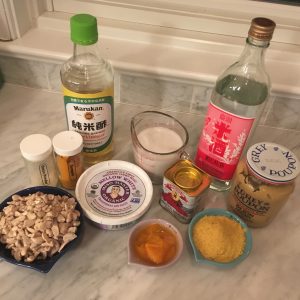
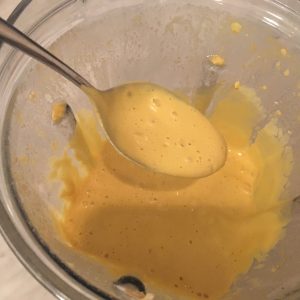
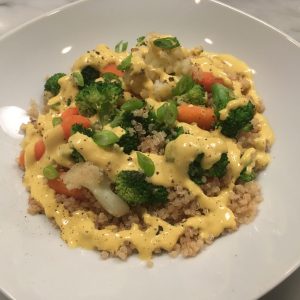
A couple nitpiks: Recipes labeled with cheesy names have to taste cheesy – nooch just doesn’t taste cheesy to me. And there isn’t any nutritional info – I’d like to know the calorie count and the percentage from fat – is it a 30-cal tablespoon or a 125 cal one? Also while the cashew craze has been well addressed, alternatives would be appreciated (since cashews are high-FODMAP) and a little more on aquafaba would also be helpful and suggestions for those among us who choose oil-free.
Bottom line – this book is a keeper. There are enough interesting concepts in here to encourage experimentation. It is not haute cuisine, but it is reliable, tasty, clean vegan. And that’s worth a lot.
